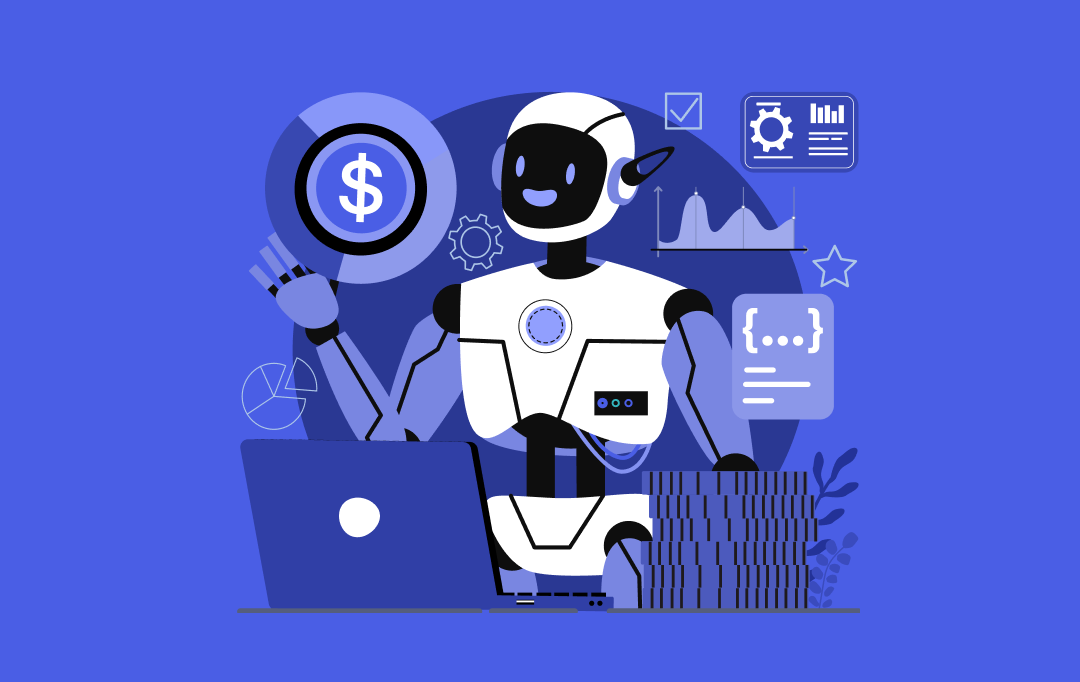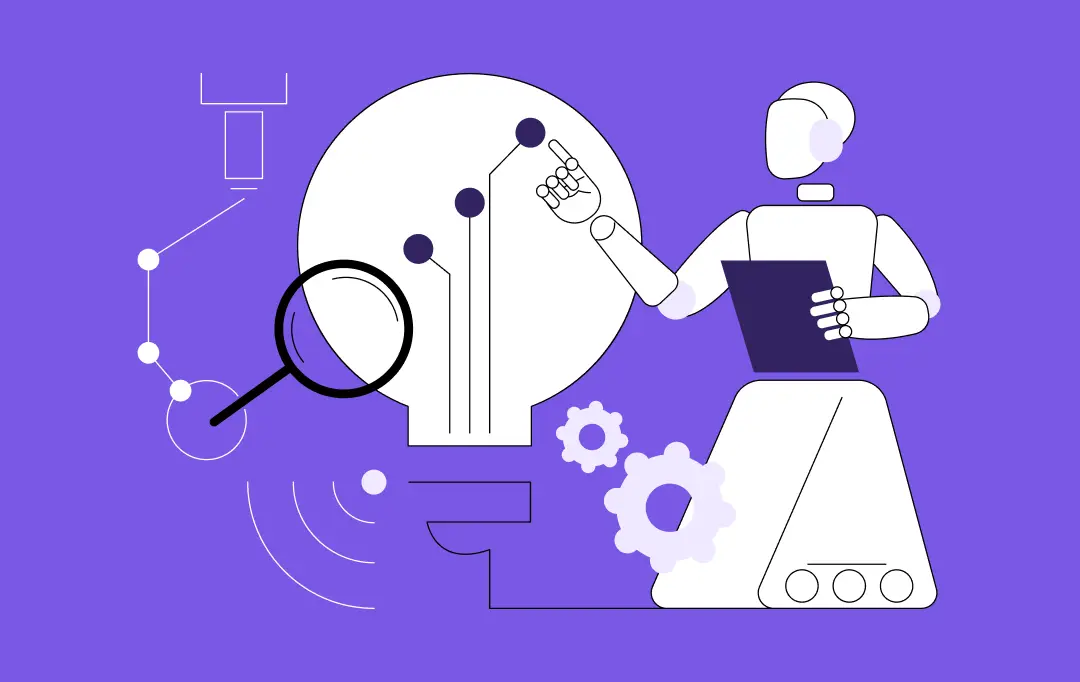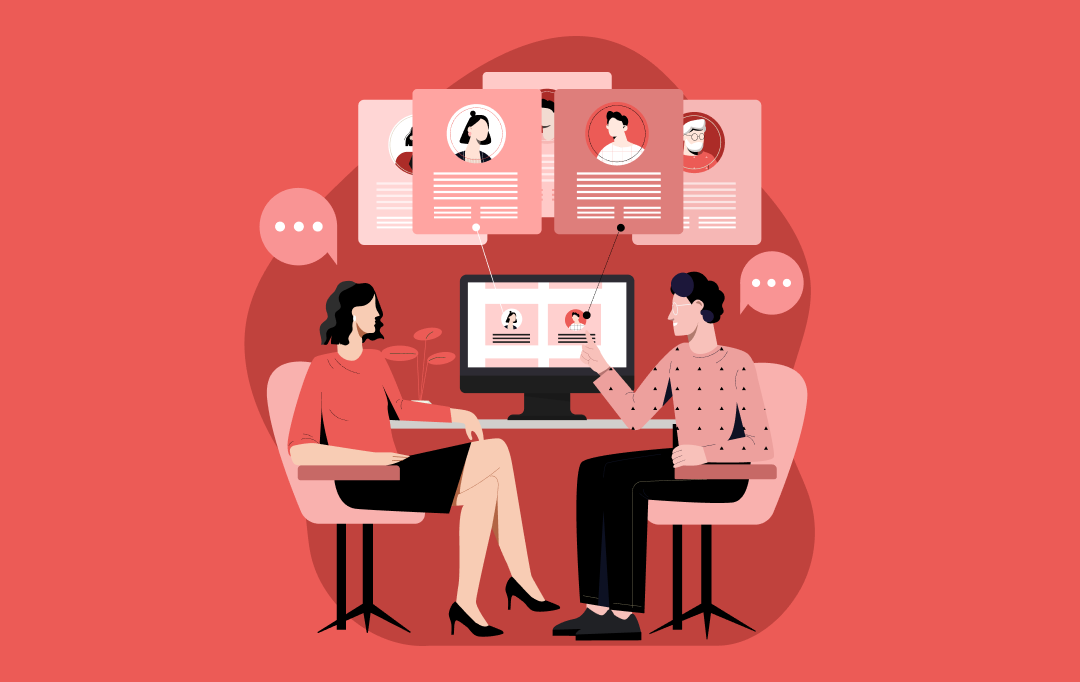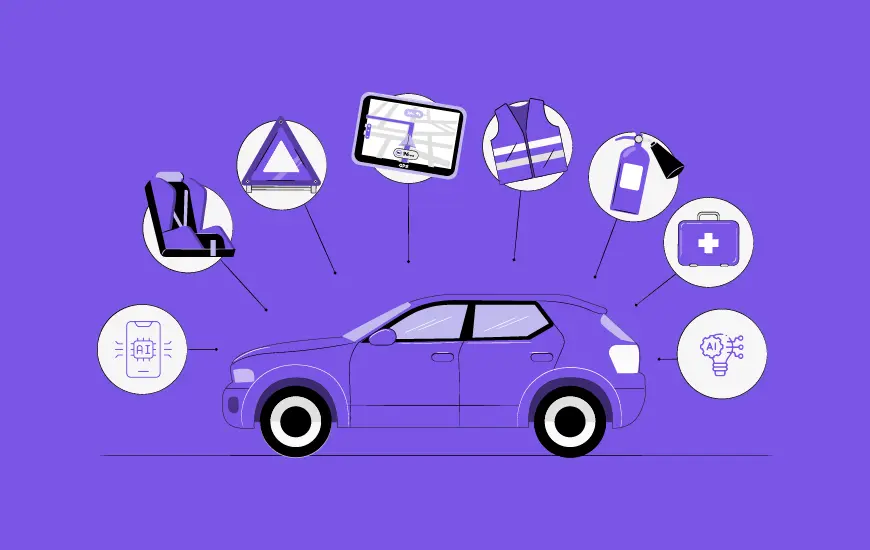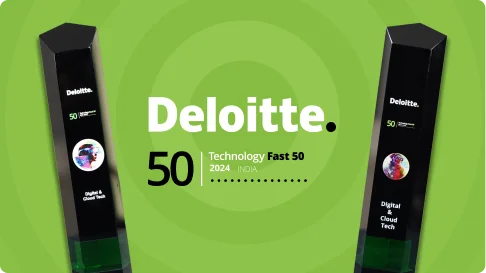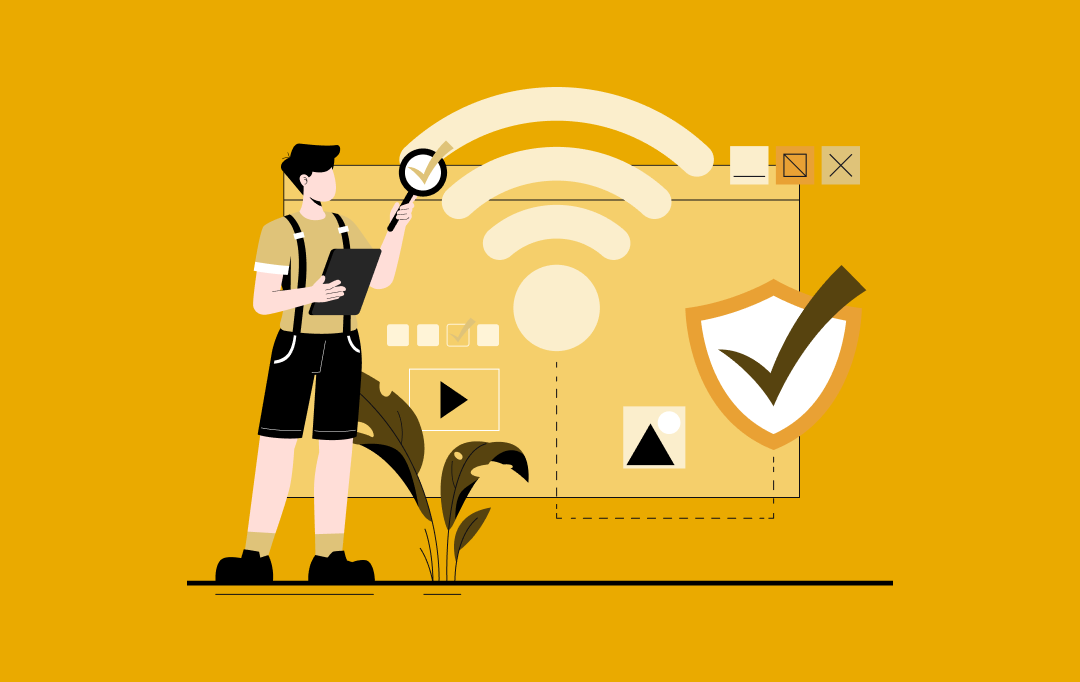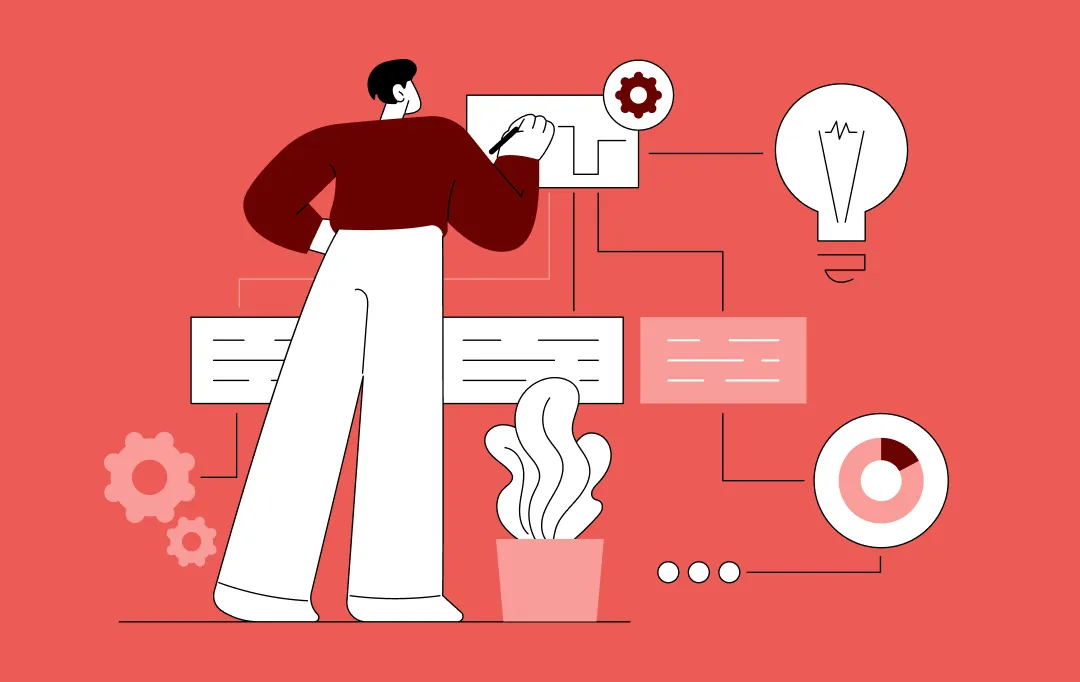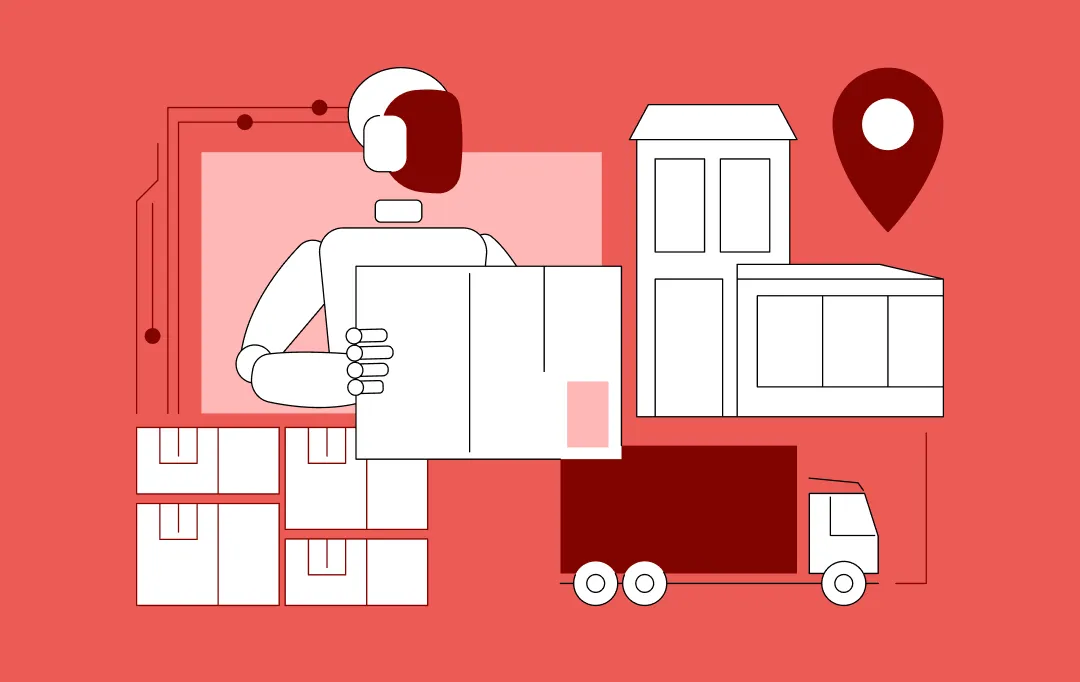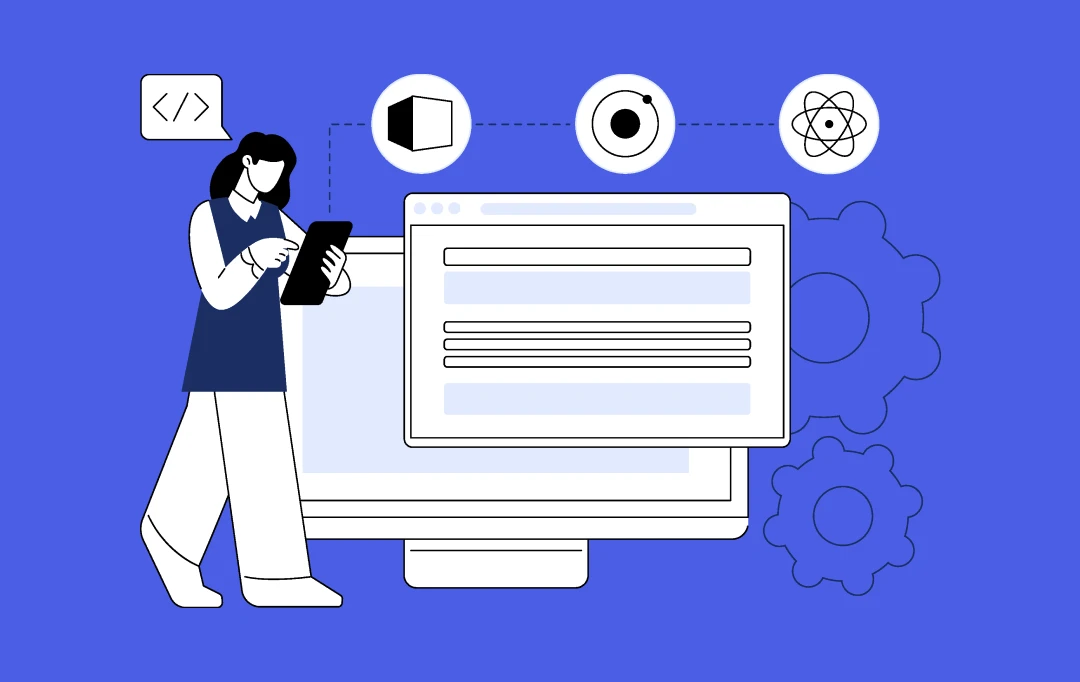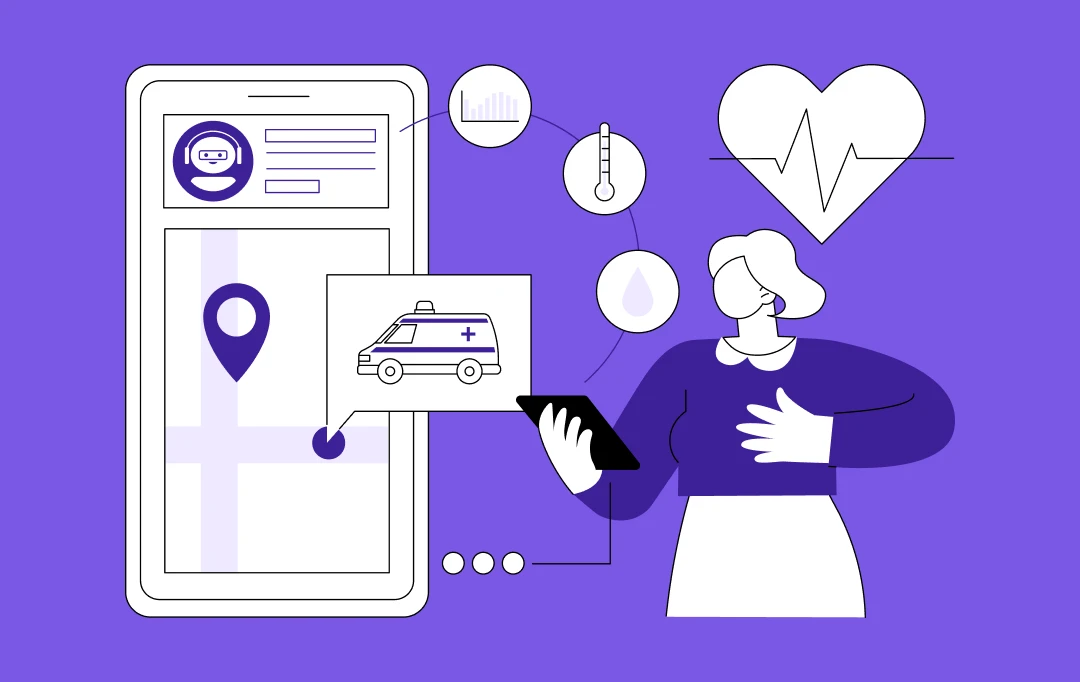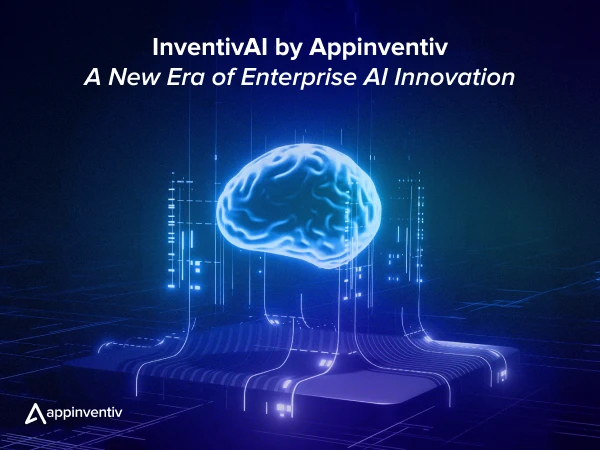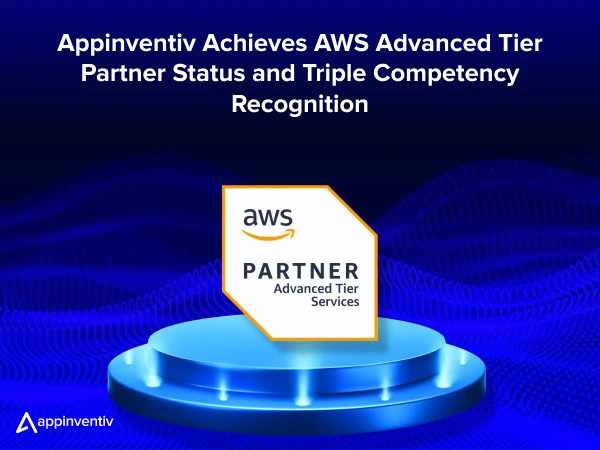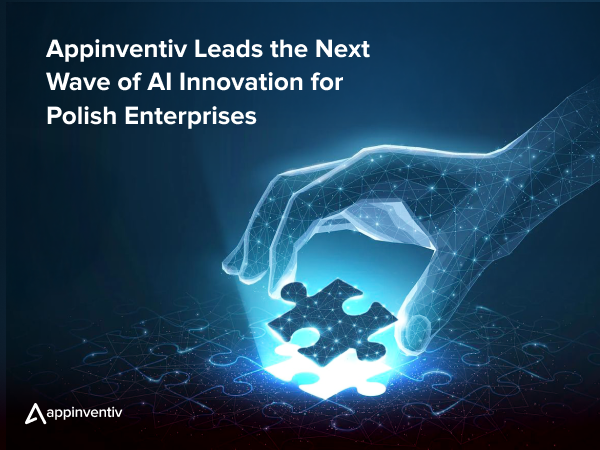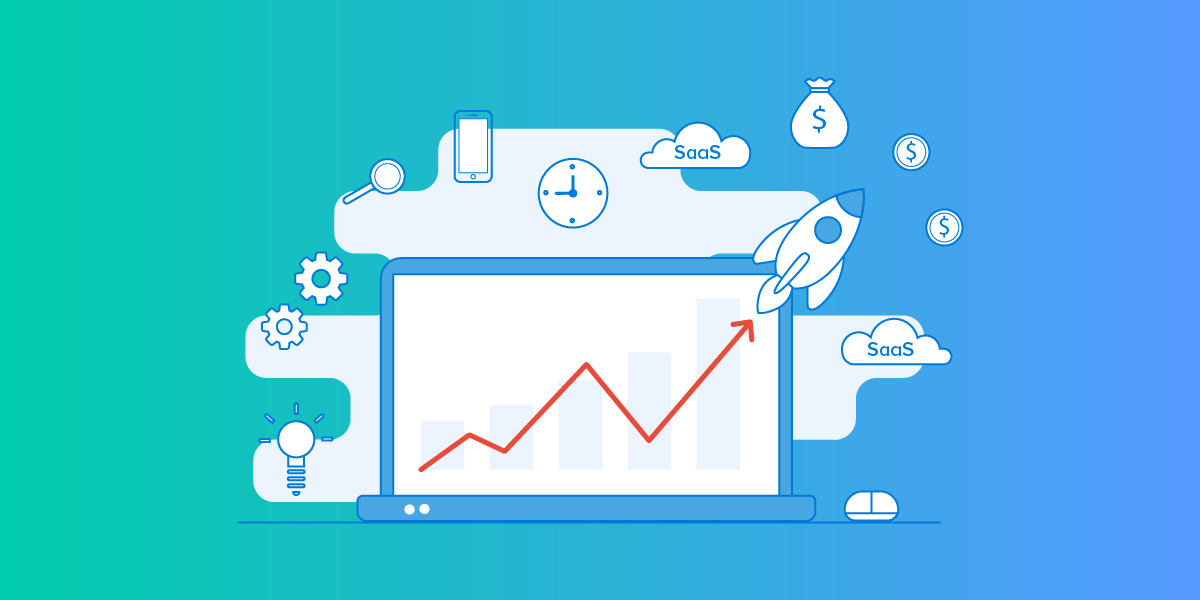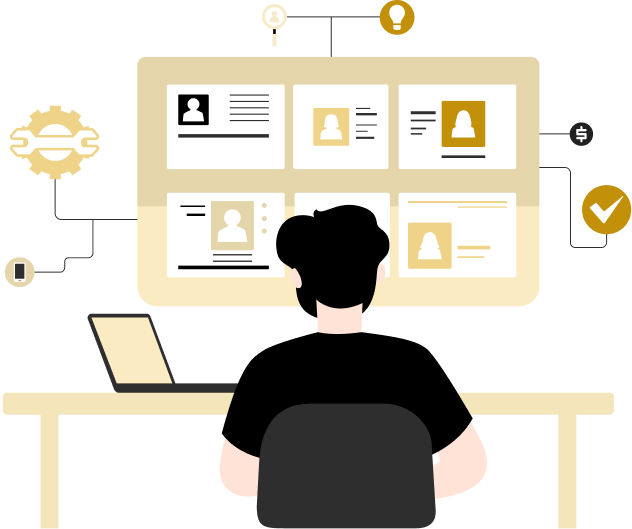- The Growing Need for Remote Employee Monitoring Software
- Features of Employee Monitoring Software
- AI and Automation Revolution
- Privacy-First Design
- Hybrid & Remote Work Optimization
- Behavioral Analytics & Employee Well-Being
- Data Security & Compliance
- Agentic AI & Autonomous Monitoring
- Ethical Considerations in Employee Monitoring
- Transparency
- Privacy Protection
- Legal Boundaries
- Finding a Balance
- Key Use Cases of Employee Monitoring Software
- Enterprises: Handling Large-Scale Productivity Tracking
- Remote & Hybrid Workforces: Ensuring Accountability & Engagement
- Highly Regulated Industries: Meeting Compliance Requirements
- How to Build Employee Monitoring Software
- Development Costs and Factors
- Estimated Budget Ranges:
- Hidden Costs to Consider:
- Development Challenges in Employee Monitoring Software
- Navigating Legal & Compliance Complexities
- Ensuring Data Security & Preventing Breaches
- Seamless Integration with Business Ecosystems
- Overcoming Employee Resistance & Skepticism
- Cost vs. Value: Competing with Established Players
- Appinventiv: Your Right Development Partner That Redefines Your Digital Boundaries
- Why Choose Appinventiv as Your Tech Partner For Software Development
- FAQs
Key takeaways:
- The employee monitoring software market is projected to reach $1.46 billion by 2032, driven by the rise of hybrid and remote work models
- Development Costs: Custom employee monitoring software development ranges from $40,000 to $400,000, depending on complexity and compliance requirements
- Compliance is Critical. Though GDPR, HIPAA, and CCPA compliance integration can increase development costs, it prevents costly legal violations
- ROI Focus: Businesses prioritize solutions that demonstrate clear productivity gains and compliance risk reduction to justify investment costs
Hybrid and remote work have fundamentally transformed how businesses operate, creating an urgent need for intelligent workforce management solutions. Today, companies face the challenge of managing teams spread across different cities, time zones, and continents while ensuring productivity, compliance, and security without traditional direct supervision.
The statistics paint a clear picture: while 73% of workers report isolation in remote work environments, 83% of organizations are embracing flexible work models to enhance retention, fundamentally changing how we think about workplace management. This shift has sparked a boom in employee monitoring software development, becoming an indispensable tool for businesses, large and small.
Are you ready to explore how employee monitoring software keeps your team aligned and drives your company forward? This software enables startups and businesses to remain competitive, from monitoring productivity patterns to data protection. But what does it take to create a solid, scalable, and ethical monitoring system?
Fortune Business Insights predicts that employee computer monitoring software development will reach $1.46 billion by 2032. Businesses especially startups and SMEs—need cost-effective, customizable solutions to optimize workforce efficiency without undermining employee trust. The U.S. promotes flexibility in monitoring, whereas the European Union’s regulations call for stricter compliance, rendering custom employee monitoring software development a strategic opportunity.
As indicated in the declining trend of the NFIB Small Business Optimism Index for 2025, growing labor expenses and economic instability again propel companies toward investing in intelligent monitoring solutions (Haver.com).
This blog will demystify everything—from the must-have features of employee monitoring software development to the best practices and cost considerations—so you can get through the process smoothly.
The Growing Need for Remote Employee Monitoring Software
As hybrid and remote work have become the norm, businesses have trouble ensuring productivity, compliance, and security without direct supervision. Old-school management methods no longer cut it, so businesses increasingly turn to remote employee monitoring software.
While traditional tracking tools are designed for conventionally monitoring employees, newer custom employee monitoring software development prioritizes workflow optimization, bottleneck detection, and real-time feedback without infringing on employees’ privacy.
Apart from enhancing efficiency, compliance with regulations has been a pressing concern. Industries that handle sensitive data must adhere to laws like GDPR, HIPAA, and CCPA, making developing employee monitoring software best practices important.
Furthermore, cyber threats have become more severe, and with remote work, the risk of data breaches and insider attacks is greater. Employee computer monitoring software investment helps business entities detect discrepancies, prevent unwarranted entry, and effect security controls—requirements for defending virtual assets amid an increasingly decentralized workplace.
Features of Employee Monitoring Software
Modern employee monitoring software is designed to enhance productivity, security, and compliance through a range of advanced features:
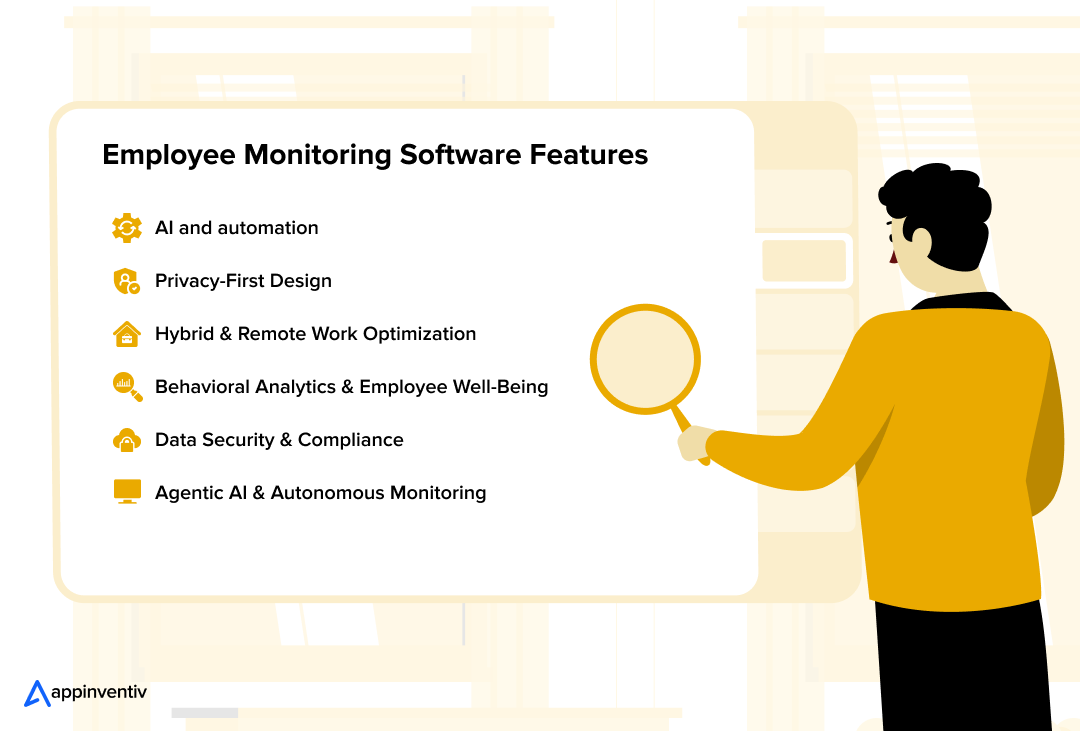
AI and Automation Revolution
AI-driven analytics are transforming employee monitoring by providing real-time insights into productivity and behavior. Unlike traditional employee time tracking solutions that rely on manual input, AI eliminates guesswork by automating data collection and analysis.
How AI Helps:
- AI-powered real-time productivity tracking evaluates work patterns without constant supervision.
- Predictive behavior modeling analyzes past data to identify performance trends and workflow bottlenecks.
- AI detects stress and burnout indicators based on keystrokes, activity levels, and break patterns, helping companies improve employee engagement.
Bonus Read: AI in HR: Transforming the Future of Work
Privacy-First Design
With growing concerns over digital privacy, companies must implement monitoring solutions that balance security with transparency. Employees are more receptive to monitoring when they understand how and why data is being used.
How AI Helps:
- AI enables anonymized data tracking, ensuring employee identities remain protected while analyzing performance trends.
- User consent and transparency features allow employees to control their data use.
- AI-powered compliance monitoring ensures adherence to privacy regulations like GDPR and CCPA, reducing legal risks.
Hybrid & Remote Work Optimization
Managing remote and hybrid teams is challenging, but AI-powered monitoring tools provide seamless oversight without disrupting workflow. These tools ensure employees remain productive and accountable, regardless of location.
How AI Helps:
- Geofencing and IP-based tracking monitor employee work locations without excessive surveillance.
- Mobile-friendly dashboards powered by AI adapt to multiple devices, making it easier for managers to oversee remote teams.
- AI analyzes time spent on tasks vs. distractions, helping businesses refine remote work policies.
Behavioral Analytics & Employee Well-Being
Modern monitoring software is shifting from strict surveillance to understanding employee behavior and well-being. AI-driven insights can help organizations prevent burnout and improve retention rates.
How AI Helps:
- Behavioral analytics tools track engagement levels, helping businesses recognize early signs of disengagement.
- Work-life balance alerts identify employees who are overworking and suggest wellness interventions.
- Predictive analytics in HR is revolutionizing workforce management by offering insights for smarter decision-making and strategic planning.
- AI-generated heatmaps of employee activity highlight workflow inefficiencies, helping businesses optimize processes.
Data Security & Compliance
With rising cyber threats, companies must protect sensitive business and employee data. AI-powered security features ensure compliance while preventing insider threats and data breaches.
How AI Helps:
- End-to-end encryption technology benefits businesses and ensures all employee data is securely stored and transmitted.
- AI-driven USB device control and insider threat detection prevent unauthorized data transfers.
- Automated compliance monitoring ensures businesses follow industry regulations without manual intervention.
Agentic AI & Autonomous Monitoring
AI is making employee monitoring more intelligent and less intrusive by automating routine tasks and generating reports. This reduces the need for constant managerial oversight and allows businesses to focus on strategy rather than micromanagement.
How AI Helps:
- AI automates task tracking, reducing the administrative workload for managers.
- Smart reporting tools analyze productivity trends and generate actionable insights.
- Ideal for startups and SMEs, AI-driven monitoring provides cost-effective workforce management solutions.
By combining these innovative features, companies can develop efficient, ethical, and future-proof bespoke employee monitoring software.
Ethical Considerations in Employee Monitoring
While employee monitoring software helps understand productivity and security, it also raises ethical concerns that need to be addressed by companies. Finding the proper balance between monitoring and not trampling over employees’ privacy is key to establishing trust and compliance. These are significant ethical considerations and guidelines to follow:
Transparency
One of the employees’ biggest concerns about monitoring is that they have no idea what data they’re gathering and how it will be used. To maintain transparency:
- Communicate monitoring policies before implementation
- Explain the purpose of monitoring and how it benefits both employees and the organization
- Obtain employee consent where required and address any concerns they may have
Privacy Protection
Monitoring should never overstep personal boundaries. Businesses must:
- Collect only necessary data related to productivity and security
- Avoid intrusive tracking methods, such as monitoring personal devices or non-work-related activities
- Incorporate data protection practices to secure employee data
Legal Boundaries
Adherence to international data privacy regulations is an important part of ethical surveillance. Businesses must ensure that their practices are under:
- GDPR (General Data Protection Regulation) – Mandates businesses to justify data gathering and provide transparency
- HIPAA (Health Insurance Portability and Accountability Act) – Applicable to healthcare businesses dealing with sensitive employee information
- Local Labor Laws – Many regions have specific laws regarding employee monitoring that must be followed
Finding a Balance
Over-monitoring can create a culture of distrust and stress. To ensure monitoring is used ethically:
- Focus on measuring output rather than tracking every minute of an employee’s workday
- Avoid real-time surveillance unless necessary for security reasons
- Use insights to support employee growth rather than penalizing minor inefficiencies
By adopting these best practices, companies can implement employee monitoring software effectively while retaining ethical accountability and employee trust.
Key Use Cases of Employee Monitoring Software
Employee tracking software extends beyond monitoring work time—it is a strategic instrument for maximizing productivity, conformity, and control over remote or massive teams. Below are some of the most lucrative industries and business models to take advantage of such solutions:
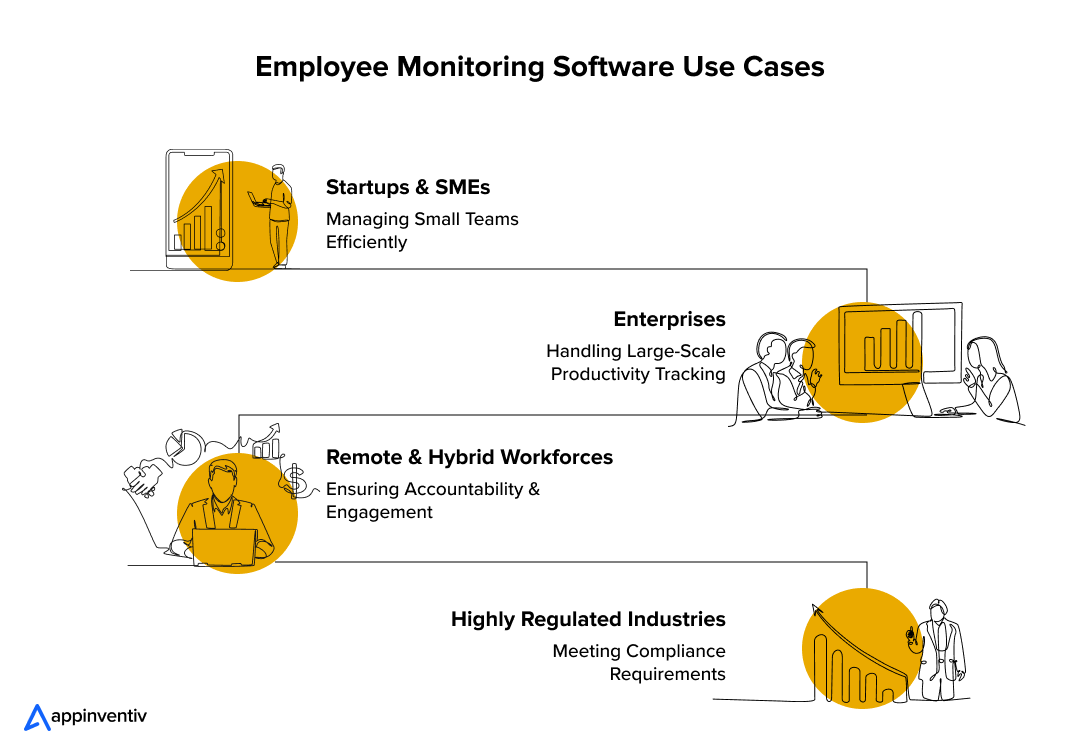 Startups & SMEs: Managing Small Teams Efficiently
Startups & SMEs: Managing Small Teams Efficiently
For small and growing businesses, every resource matters. Employee monitoring software helps startups and SMEs:
- Track work hours and ensure optimal resource allocation
- Detect inefficiencies and optimize workflows
- Ensure transparency in remote or hybrid environments
Enterprises: Handling Large-Scale Productivity Tracking
Enterprises with hundreds or thousands of employees need a structured system to manage workforce productivity. Monitoring software assists in:
- Tracking large teams without micromanaging
- Preventing time theft and unauthorized system access
- Creating real-time productivity reports for data-driven decision-making
Remote & Hybrid Workforces: Ensuring Accountability & Engagement
Given the remote and hybrid work trend, companies require tools to ensure workers remain productive without constant surveillance. Key benefits of employee monitoring software development include:
- Tracking active work hours and idle time
- Tracking project progress and completion of tasks
- Fostering self-discipline and autonomy among remote workers
Highly Regulated Industries: Meeting Compliance Requirements
Compliance with Regulatory Requirements Finance, health, and law firms are businesses that have to comply with stern regulatory standards. Monitoring software helps these businesses:
- Guarantee data protection and avoid misuse
- Support industry regulations (e.g., GDPR, HIPAA)
- Log employee activities for auditing and legal documentation
Knowledge of these use cases enables companies to identify how employee monitoring software supports their operational requirements and future objectives.
How to Build Employee Monitoring Software
It requires a systematic approach to create employee monitoring software with functionality, security, and compliance. The following is a step-by-step Employee Monitoring Software development life cycle process:
- Requirement Assessment & Planning – Establish key goals, features, and compliance specifications. Plan for scalability, sector compliance, and integration with existing tools.
- Designing the User Interface (UI/UX) – Develop a straightforward, easy-to-use dashboard for simple monitoring with a smooth experience for employees and administrators.
- Choosing the Technology Stack – Select suitable programming languages, frameworks, and cloud infrastructure depending on performance, security, and scalability requirements.
- Development & Coding – Implement real-time monitoring, data processing, and security features with third-party software integration.
- Testing & Quality Assurance – Perform thorough testing to detect bugs, improve performance, and adhere to privacy policies.
- Deployment & Implementation – Deploy the software on various devices and platforms with efficient onboarding and training.
- Maintenance & Updates – Periodically update features, strengthen security features, and enhance system performance based on user feedback and future trends.
Following these Employee Monitoring Software development best practices ensures a cost-effective, scalable, and compliant solution for meeting the increasing needs of businesses.
Development Costs and Factors
Depending on complexity, functionality, and compliance, employee monitoring software development costs range from $40,000 to $400,000. Key Employee Monitoring Software development cost influencers include:
- Software Complexity & Features – Basic tracking tools cost less, while AI analytics for business, real-time reporting, and security features increase expenses.
- Technology Stack & Development Team – Choosing a robust AI tech stack and hiring experienced developers significantly impact costs.
- Compliance & Security Measures – CCPA, GDPR, or HIPAA compliance implementation brings security and legal dimensions, increasing the development cost.
- Integration with Existing Systems – Compatibility with HR systems, cloud storage, and productivity suites could involve custom APIs and more development time.
Estimated Budget Ranges:
- Basic Software (limited monitoring & reporting) – $40,000 to $80,000
- Mid-Level Software (real-time reporting, monitoring, integrations) – $80,000 to $200,000
- Advanced AI-based software (behavioral analysis, automation, security compliance) – $200,000 to $400,000
Hidden Costs to Consider:
- Maintenance & Updates – Ongoing bug fixes, security patches, and feature updates.
- Cloud Hosting & Storage – Expenses for securely hosting activity logs and reports.
- Legal & Compliance Fees – Compliant with privacy regulations, particularly in regulated industries.
Development Challenges in Employee Monitoring Software
Developing remote employee monitoring software is accompanied by great challenges, especially in balancing privacy, security, compliance, and user adoption. Companies must navigate these challenges carefully to develop a tool that raises productivity without compromising trust.
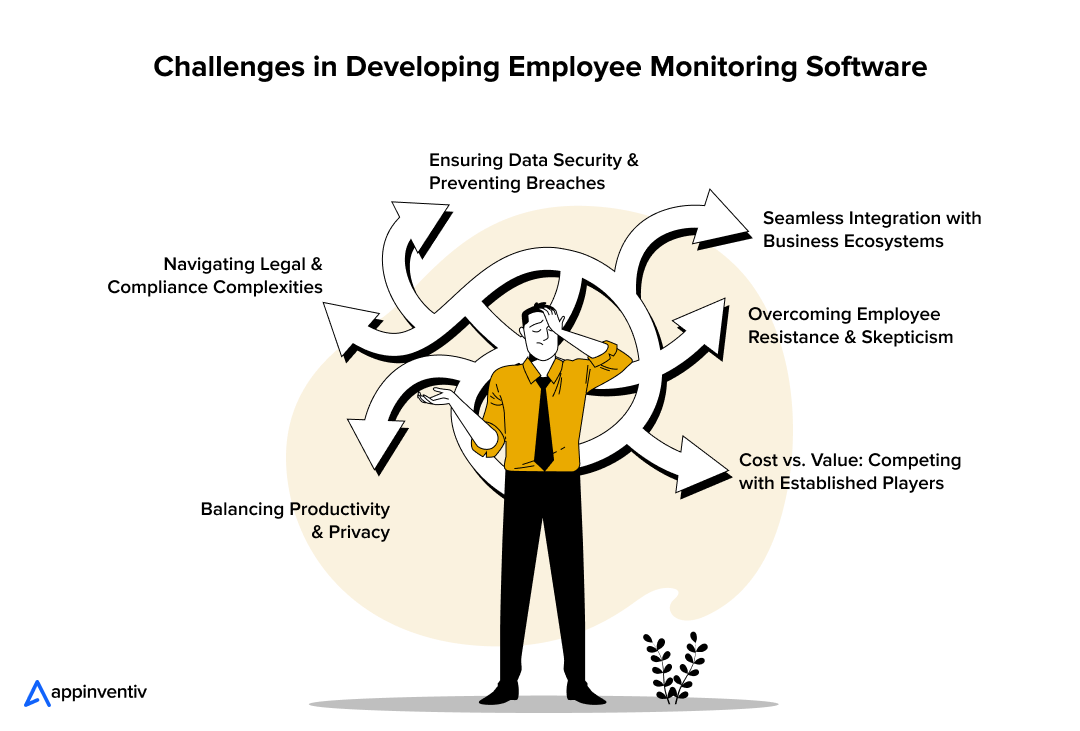 Balancing Productivity & Privacy
Balancing Productivity & Privacy
- Finding the balance between monitoring and autonomy is key. Firms such as Amazon have been criticized for over-monitoring, with ethical implications.
- Startups must implement transparent monitoring systems where employees know what is being monitored and why. Consent-based tracking and anonymized analytics can mitigate fears.
Navigating Legal & Compliance Complexities
- The US has a patchwork of regulations, including federal laws like the Electronic Communications Privacy Act (ECPA) and state-based consent laws.
- Businesses must develop compliant features that are flexible enough to address California’s CCPA, New York’s workplace privacy laws, and upcoming federal regulations.
- Non-compliance is punishable by law and loss of reputation and is, therefore a key development priority.
Ensuring Data Security & Preventing Breaches
- Employee monitoring software captures private user information, which is the target of cyber attacks.
- For breach defense, businesses must employ end-to-end encryption, access controls, and insider threat detection.
- Since 33% of US bankruptcies are attributed to employee fraud (CompareCamp), business organizations have become more interested in enhancing security within monitoring tools.
Seamless Integration with Business Ecosystems
- Contemporary workplaces depend on several tools—HRMS, payroll software, project management software (e.g., Asana, BambooHR)—and monitoring software needs to integrate smoothly with these tools.
- A well-planned API strategy provides seamless integration, minimizing workflow interruptions and onboarding resistance.
Overcoming Employee Resistance & Skepticism
- Most employees find monitoring tools invasive, resulting in low adoption.
- Microsoft’s “productivity paranoia” report indicated employees feel distrusted when monitored excessively.
- Solutions like real-time transparency dashboards, user-managed tracking switches, and responsible AI can alleviate distrust and spur adoption.
Cost vs. Value: Competing with Established Players
- New startups joining this sector must compete against industry leaders such as Teramind and Hubstaff, so price becomes a significant metric.
- Having tiered price plans—from simple tracking for SMBs to AI-powered analytics for enterprises—can enable new players to scale effectively.
- Demonstrating clear ROI (e.g., productivity gains, compliance risk reduction) is essential to justify costs for potential buyers.
Despite these challenges, custom Employee Monitoring Software development remains a high-growth opportunity, with businesses demanding scalable, secure, and compliant solutions to optimize workforce productivity.
Appinventiv: Your Right Development Partner That Redefines Your Digital Boundaries
Being a custom software development firm, we at Appinventiv understand that building powerful and compliant software requires the right expertise. Whether you need a feature-rich employee monitoring tool, enterprise-grade security, or AI-powered automation, our team builds scalable, high-performance solutions. With deep expertise in AI, blockchain, and cloud technologies, we ensure your software is efficient and future-ready.
We guarantee a smooth Employee Monitoring Software development process from planning to deployment. Here’s how Appinventiv can revolutionize your existing employee monitoring system and enhance HR operations with our custom software development services:
| What We Offer | How It Enhances Operations | Benefits You Get |
|---|---|---|
| Customized Feature Development | Tailors software features specifically to meet your HR operational requirements, eliminating unnecessary functions. | Increases operational efficiency and effectiveness, ensuring you invest only in what delivers value. |
| Integration Expertise | Seamlessly integrates the software with your IT infrastructure, enhancing system interoperability and data flow. | Simplifies IT management reduces data silos, and enhances decision-making capabilities. |
| Advanced-Data Analytics | Incorporates AI in asset management software to analyze and visualize operational data, providing deeper insights and forecasts. | Facilitates predictive analytics, reducing delays in the decision-making process, optimizing costs, and improving efficiency. |
| Robust Security Protocols | Enforces stringent security measures to protect sensitive operational data. | Shield your operations from cyber threats and ensures compliance with regulatory standards. |
| Scalability | Designs the software to easily scale with your business growth or changes, maintaining high performance. | Minimizes the need for extensive future upgrades, managing growth efficiently without performance degradation. |
| Regulatory Compliance | Ensures the software adheres to current and future regulations, keeping your operations compliant. | Avoids legal issues and fines, ensuring smooth operational continuity under all regulatory conditions. |
Why Choose Appinventiv as Your Tech Partner For Software Development
- Proven Expertise Across 3000+ Projects: With over 3000 successful projects delivered across various industries, Appinventiv’s experience speaks volumes about our technical know-how and commitment to providing quality solutions.
- Proven Track Record: With numerous successful projects under our belt, our proven track record speaks to our ability to deliver on time and within budget. Some of our notable clients include KFC, IKEA, Pizza Hut, Domino’s, Adidas, and more. We have also helped startups like JobGet, EdFundo, Vyrb, and more earn millions in funding rounds.
- A Global Workforce of 1600+ Specialists: Our diverse team of 1600+ professionals brings together creativity, technical expertise, and deep industry insights, ensuring a holistic approach to fintech app development.
- Agile Methodologies: We utilize Agile development methodologies to ensure flexibility and efficiency, allowing continuous improvement and rapid change adaptation.
- Strong Communication: Our emphasis on clear and consistent communication ensures that every project phase is aligned with client expectations.
- Recognition for Innovation and Excellence: Honored with the title of ‘Tech Company of the Year’ at the Times Business Awards 2023, Appinventiv is a trusted leader in delivering top-tier fintech solutions.
- Proven Success Record: When you choose Appinventiv as your tech partner, you align with a company with a demonstrated history of delivering exceptional results. Our extensive collection of client testimonials showcases how we’ve transformed businesses across industries with innovative software solutions.
Looking for a reliable development partner? Let’s build a secure, intelligent employee monitoring solution tailored to your business needs. Get in touch today.
FAQs
Q. What is employee monitoring software?
A. Employee monitoring software is a computer application used to record and monitor workers’ activities to improve productivity, security, and compliance. It can track working hours, application usage, and website browsing and even prepare reports on overall efficiency.
Q. Is employee monitoring software legal?
A. Yes, but legality depends on regional laws. In the U.S., it is legally okay if workers are explained and consent is given, whereas in the EU, there are tighter controls with GDPR. Companies require transparency and respect for local privacy legislation.
Q. How does employee monitoring software enhance productivity?
A. With their real-time exposure to work patterns, inefficiencies, and auto-reporting capabilities, employee tracking software enables firms to streamline workflows, limit distractions, and enhance overall output. Certain evolved versions even integrate AI-based analysis to detect the risk of burnout.
Q. What are the main features of employee monitoring software?
A. The main features of employee monitoring software are:
- Real-time tracking of work hours and activities
- User activity logs for website and app usage
- Data analytics & reporting for performance insights
- AI-driven behavior analytics for engagement tracking
- Security features like insider threat detection and access control
- Seamless integrations with HRMS, project management, and cloud tools
Q. Can employee monitoring software be integrated with other systems?
A. Yes, most contemporary customized Employee Monitoring Software development solutions include integrations with HR tools, project management applications, and cloud-based configurations to facilitate hassle-free workflows without disturbing existing protocols.
Q. What should businesses consider when choosing employee monitoring software?
A. There are various consideration factors that you should ponder while choosing employee monitoring software:
- Legal compliance with local privacy laws
- Transparency features to build trust among employees
- Scalability and customization options
- Ease of integration with existing tools
- Security measures to prevent data breaches
- Cost-effectiveness and return on investment
Q. How much does it cost to develop custom employee monitoring software?
A. Employee Monitoring Software development costs $40,000 to $400,000 based on complexity, features, integrations, and security requirements. AI analytics and sophisticated compliance can add to development expenses.
Q. What are the challenges of implementing employee monitoring software?
A. Besides basic, there are other given below challenges that influence the performance of your employee monitoring software:
- Balancing productivity and privacy to avoid employee pushback
- Legal compliance with various data protection laws
- Data security risks, including unauthorized access or breaches
- System integration issues with existing software
- User adoption resistance, requires clear communication and trust-building


- In just 2 mins you will get a response
- Your idea is 100% protected by our Non Disclosure Agreement.
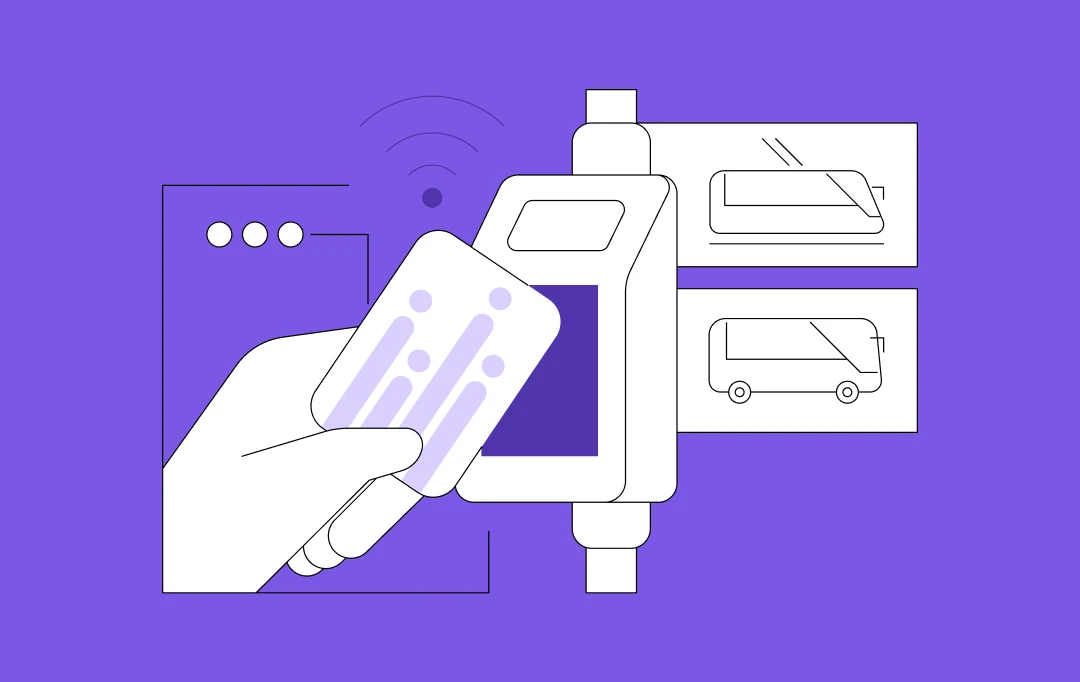
How to Build an RFID Asset Tracking System in The UAE?
Key takeaways: The success of an RFID asset tracking system is dictated by the quality of the custom software and middleware, which must transform voluminous raw tag data into actionable intelligence. Implementation of RFID systems requires a managed, multi-stage process, moving logically from Integration Consulting and architectural design to Continuous Monitoring and Optimization, which is…
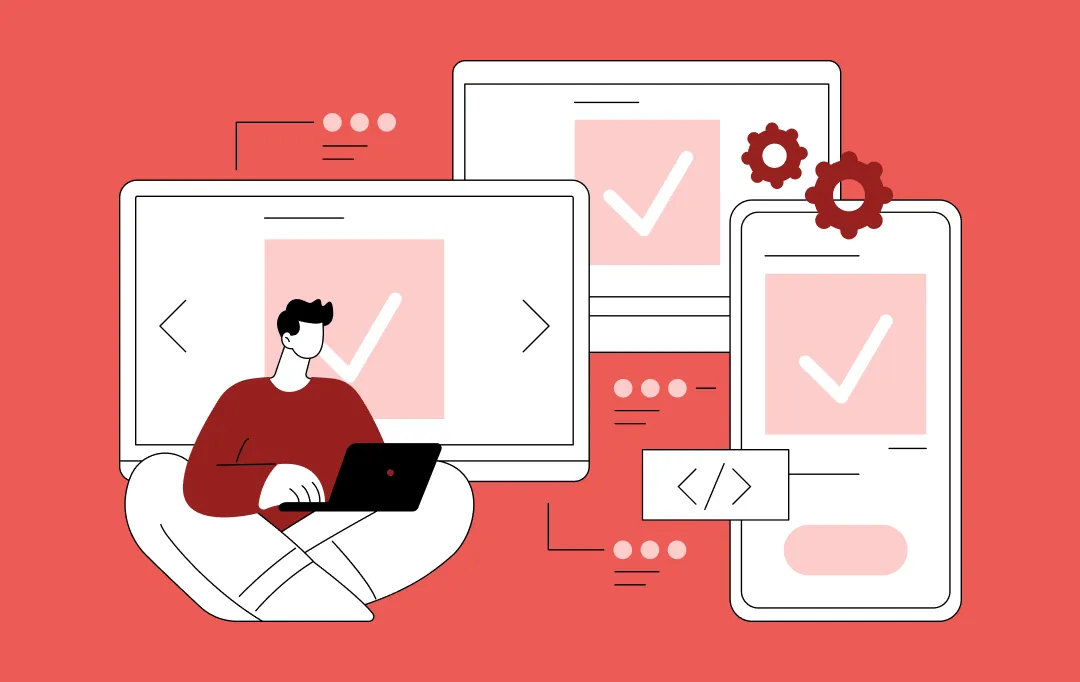
How to Build a White-Label Grievance Management Software? Process, features, costs
Key Takeaways White-label grievance management software allows businesses to quickly implement, rebrand, and scale solutions without reinventing the wheel. The development process involves multiple stages, including requirement gathering, workflow design, tech stack selection, and ensuring compliance and scalability. Key features include multi-channel intake, automated routing, customizable workflows, AI-driven categorization, and built-in compliance and security. Costs…
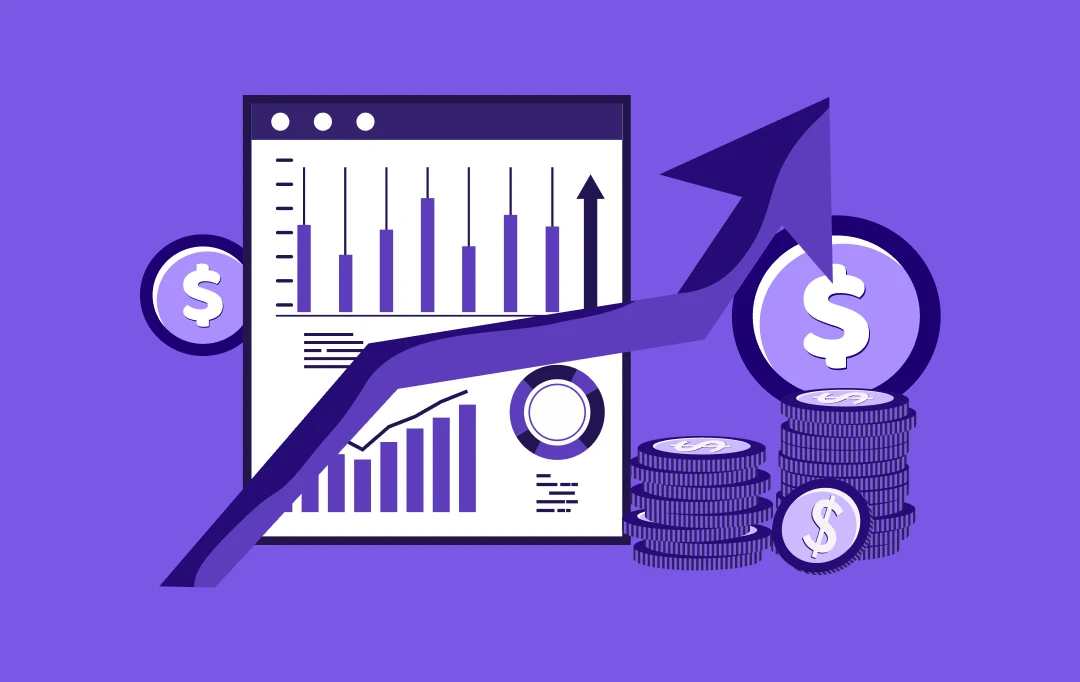
How to Build a Demand Forecasting Software?
Key Takeaways Modern demand forecasting software leverages AI and real-time data to boost accuracy and efficiency. Custom solutions integrate seamlessly with ERP, CRM, and inventory systems for end-to-end visibility. Accurate forecasting reduces costs, optimizes resources, and improves customer satisfaction. Cloud-based, scalable platforms make advanced demand planning accessible to businesses of any size. Demand forecasting used…
